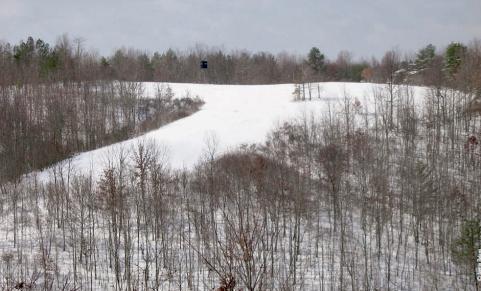Wes Delks | Originally published in GameKeepers: Farming for Wildlife Magazine. To subscribe, click here.
Designing a food plot isn’t rocket science; however, there are some key decisions that will significantly impact how attractive your plots will be to whitetails and how easy they will be to hunt for you. Where you decide to put a food source, how you shape your plot and crop selection can have tremendous impact on utilization and harvest consistency.
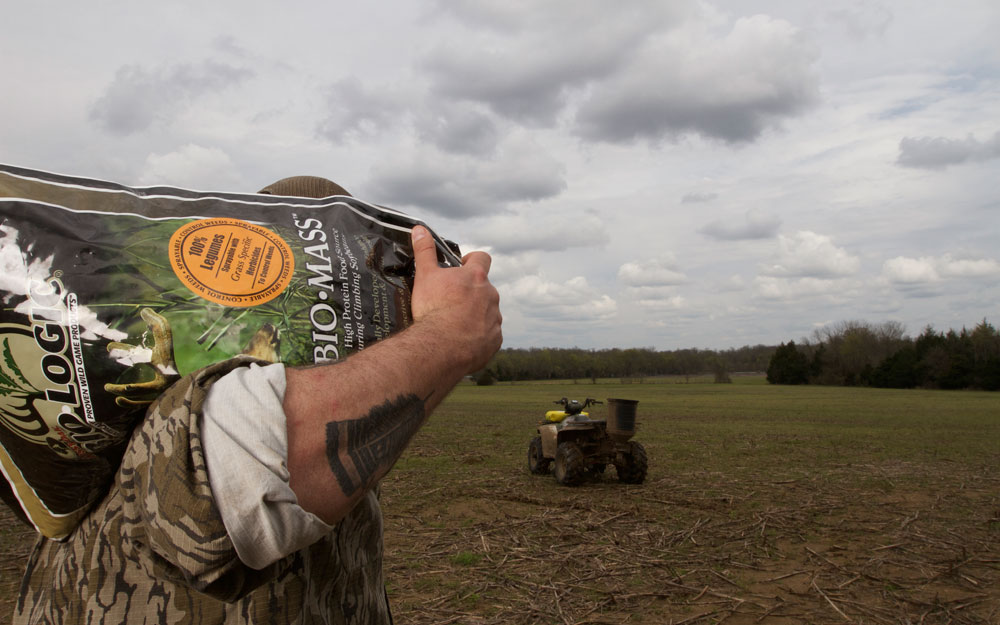
An architect spends countless hours planning the shape, layout, and position of a project before a building begins construction. Decisions will be based upon what the building will be used for, budget, site constraints, the goals of the client and all the while promoting efficiency for the individuals who will be using it. As habitat managers, we should be “food plot architects” and have similar strategic plans when designing a plot.
If you just pick a random spot on your property and whip some seed onto the ground, your plot will not be as successful as if you take the time to consider a few details. The placement of a food plot can mean the difference between hooking up with the alpha buck and getting skunked.
You obviously need to play the topography you’re dealt, but I prefer a spot near the center of a property. I like to think of myself as a generous person, but sharing deer with the neighbors is not an objective of mine. If you are going to put time, sweat and cost into a food plot, why choose a spot where neighboring hunters can see? Obviously this will all depend upon the size of your property, the type of cover, your herd’s travel patterns and numerous other points, but the idea is simply to keep your plots from being seen or disturbed by others.
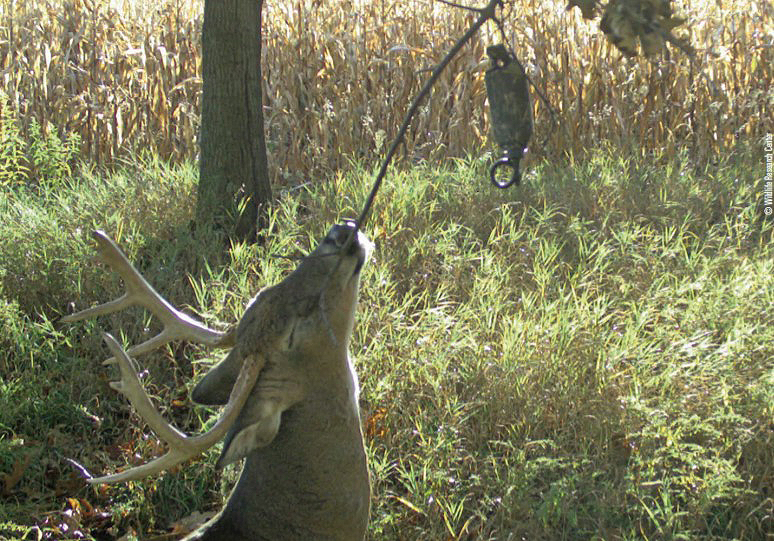
Choose plot sites as close to thick cover as possible. Locations adjacent to bedding areas or sanctuaries are ideal. My goal is to provide staging areas that are a deer’s initial afternoon snack in the evening and their “last bite” before bedding in the morning. I want to promote as much daytime utilization as possible. I can do this by placing my plots between bedding areas and large destination agricultural fields where they go to feed at night.
I like to decide where to put new food plots during my post-season scouting. This is one of the only times of year I allow myself to walk anywhere on the property so I can see where deer travel is concentrated. You want to locate your plots where whitetails naturally historically travel, not in an area where they have to deviate from the norm.
Satellite images, aerial photos or topographical maps can help in determining the best spots for harvest plot locations. Obviously, we have to play what Mother Nature deals us in the way of open areas and possible plot locations, but when choosing a site you must use common sense and choose a spot that’s close enough to the buck’s bedding area so that he’ll be able to make it to the plot before dark. Most harvest plots should be within 300-400 yards of at least one good bedding area. Obviously deer may travel several miles to get to the plot, but the closer it is to where he’s bedding the better your chances for a shot during legal light.
Once you have a general area chosen, look for places that already allow sunlight to hit the ground or can be easily manipulated to receive sunlight at some point during the day. Although many food plot species are shade tolerant, the plots that produce the most tonnage per square foot receive good sunlight throughout the day.
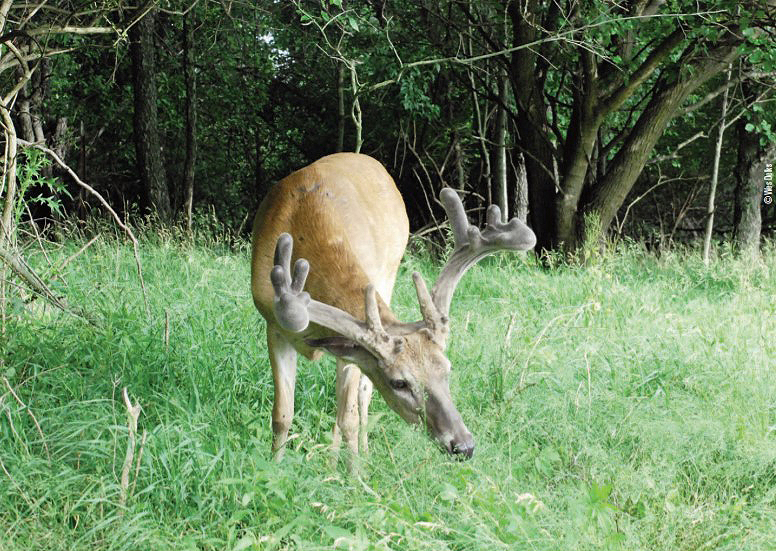
Before I decide on the exact layout of a plot, I first decide on the tree. Having easy access to the plot and creating minimal disturbance with your approach and exit is critical so deer will not be repeatedly spooked every time you hunt. I design my plot based on the tree I plan on hunting from. Many hunters choose several stand locations so they’re able to play different winds or approach conditions. Choosing the right ambush location is an entirely separate article; but essentially you want to choose a spot that provides enough cover and allows you the ability to approach without intersecting the path the majority of the deer will be using.
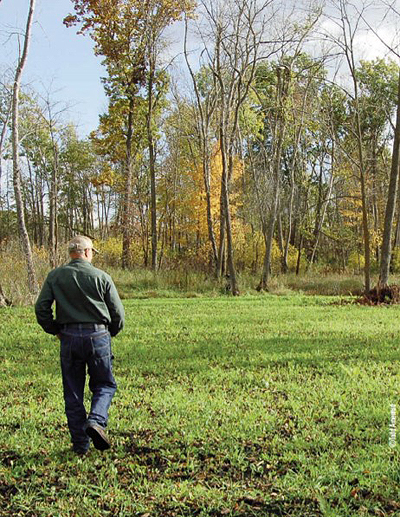
designs a plot. Others prefer to read the sign and consider
the conditions after all the alterations have been made.
The actual shape of the plot is critical for placing deer within range. Although a nice square plot may be easy to work and appeal to your farming background, but whitetails love irregularity in habitat structure - the more edge, the better. Plant irregular shaped plots that take advantage of the terrain and natural habitat. Having fingers jutting into your plots or pinch points can be used to your advantage. Hourglass shapes or “L” shaped plots both create good stand locations when elevation changes or terrain breaks don’t naturally provide funneled movement.
You may have to use smaller equipment or even hand tools on these hunting plots since they are typically closer to bedding areas which usually means in the timber and possibly thick cover. If you can get an ATV, tractor or dozer to the site, all the better, but that doesn’t mean you can’t have a very effective hunting plot by using just a hand tiller, backpack sprayer, hand broadcaster and a rake.
As far as what to plant, you obviously want to have a palatable, attractive food choice available for the duration of the time that you want to hunt the site. Variety is a key. However, with smaller plots you can’t go wild with too many different varieties otherwise, when a specific cultivar comes into its most attractive stage there won’t be enough to go around - they’ll “clean the table” too quickly and if you turn your back for two days all your food will be gone.
How much variety you can pull off ultimately will be determined by the quality of the native vegetation, how much total acreage you have in food plots, and if there is cash-crop farming in the area. If your deer density is low and you have good quality native foods your food plot crops go further. It will also help if you have many total acres in food plots, then you can typically get away with more variety in the smaller plots because there’s food of that type spread all over the property. This can also be the case if you have agriculture in the area. Certain cash-crops like corn, soybeans or alfalfa can take a lot of pressure off of your food plots.
Deer movement in and out and around the plot can be greatly influenced by using a couple simple tactics. Felling trees to restrict or guide traffic is easy to do and can funnel whitetails precisely where you want them to walk or prevent access downwind of you. Creating mock scrapes in strategic locations or removing licking branches where you don’t want them to be can place a buck in the perfect spot and angle for a textbook kill shot.
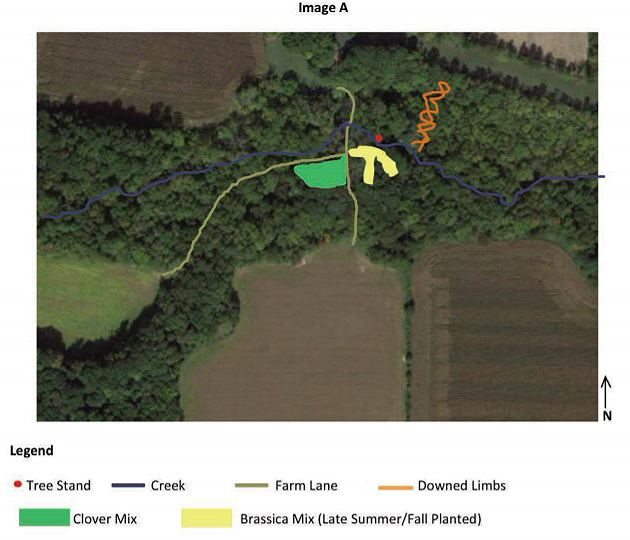
The satellite image “A” is a diagram of two new food plots I am creating this year to capitalize on the techniques I have mentioned. In the property pictured, deer usually bed in the thickest cover, which is to the east of the stand location. In the evenings, they emerge from bedding cover and move west into large agricultural fields to feed.
I enter this property from the north on the farm lane. I can enter the small creek where it intersects the farm lane and walk directly down the creek where it's more difficult for deer to smell my tracks. I have placed large, downed Hunting Plot Blueprint continued limbs on the deer trails on the north side of the creek so deer will cross the creek before reaching my stand.
A clover mix has been planted west of the lane, and a brassica blend planted on the east side, both fit snugly into the property’s terrain features. There is naturally an intersection of deer trails at the point of the finger jutting into my plot. A mineral station is set up here, where a trail camera is placed overlooking the plot. It can be checked without ever leaving the safety that the creek provides from scent detection. The placement and shape of the brassica plot concentrate deer movement into my 20-yard shooting lane.
To fully capitalize on the design of a food plot, choose centrally located areas where deer are already traveling. Make sure your plot is close to bedding cover and it will receive plenty of sunlight. Ensure you can also access your site with minimal disturbance. Devise the plot to funnel movement using irregular shapes and terrain features and move in to strike when the conditions support success.















